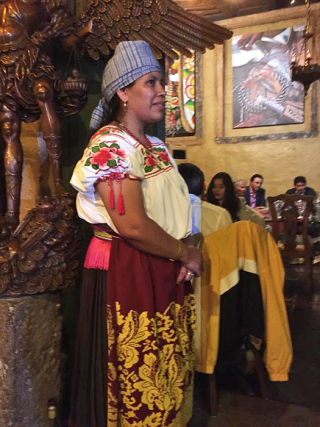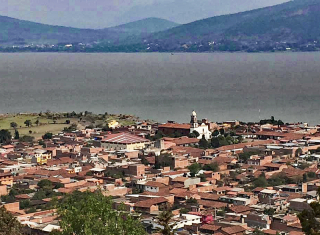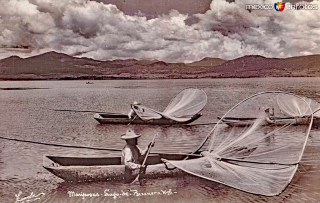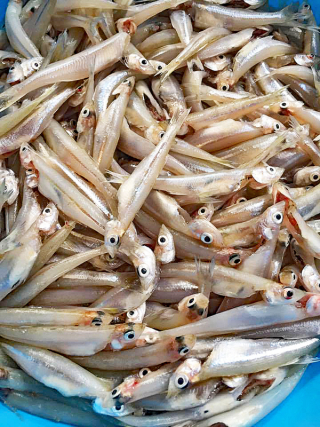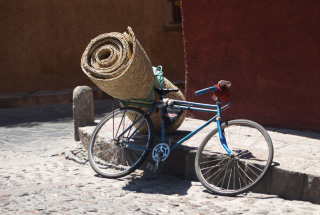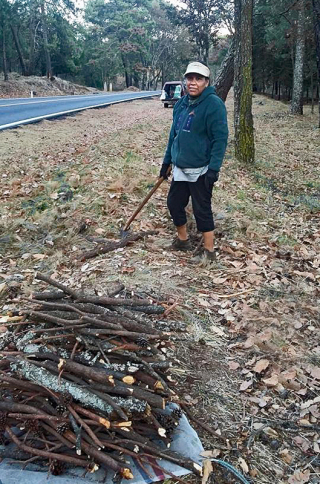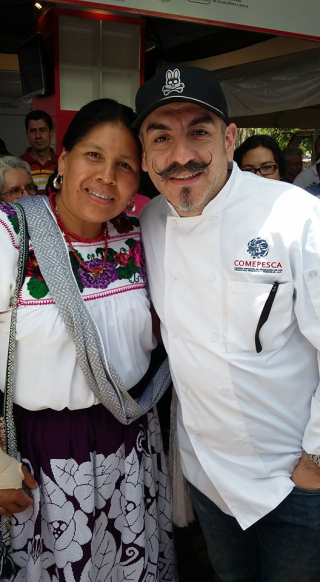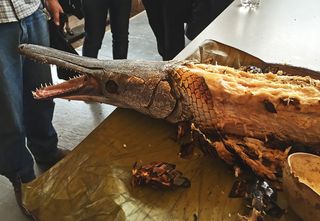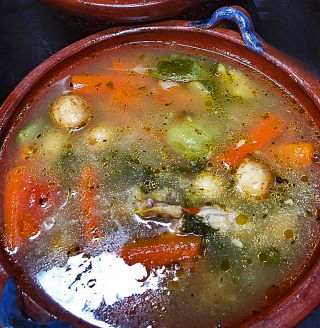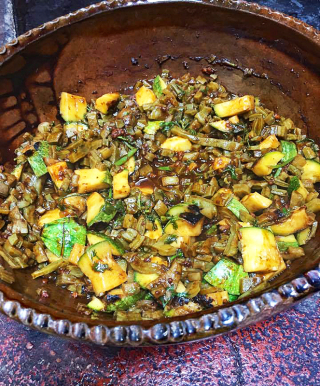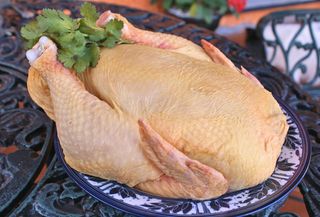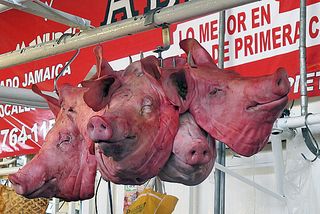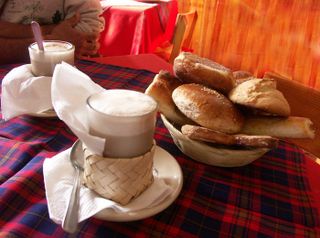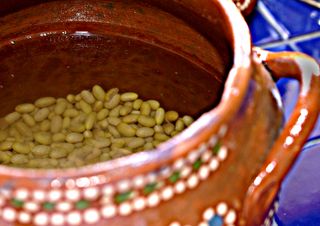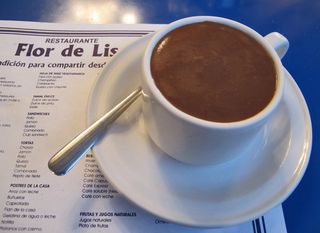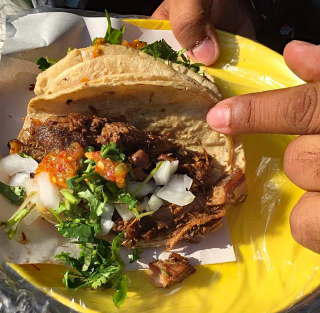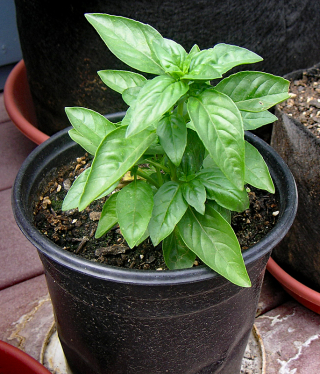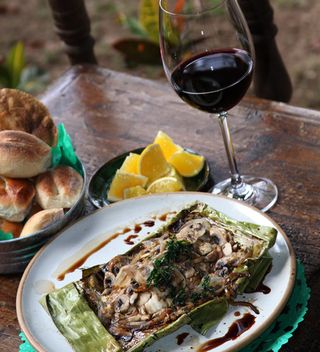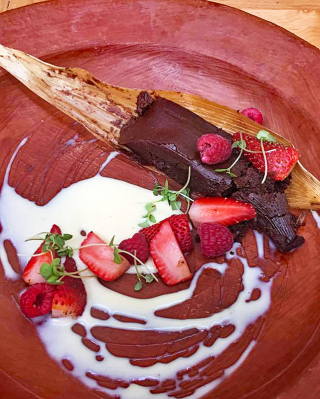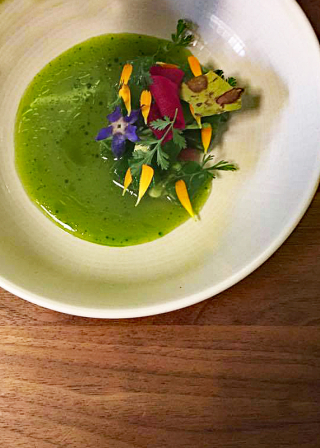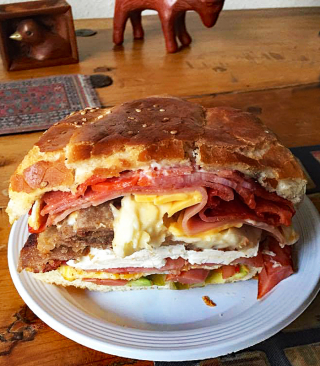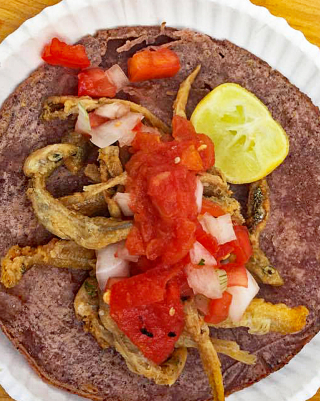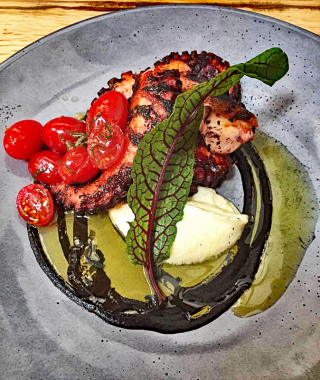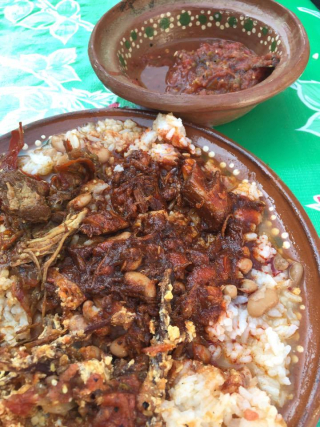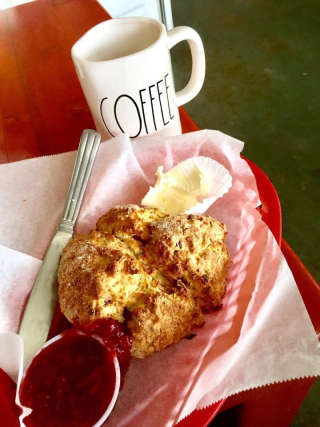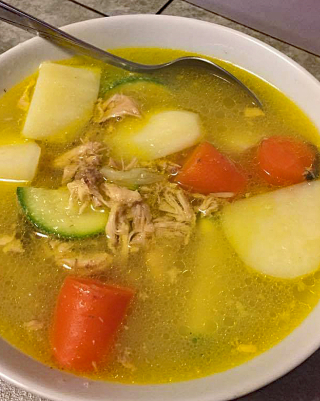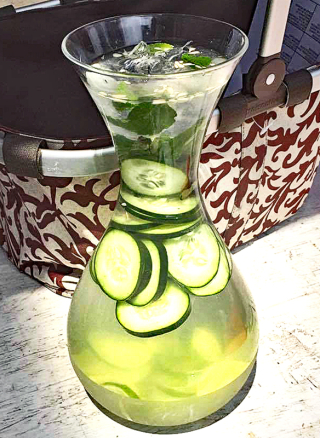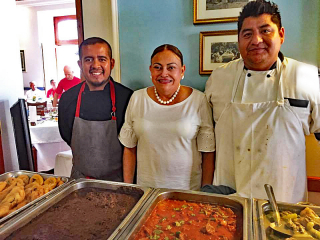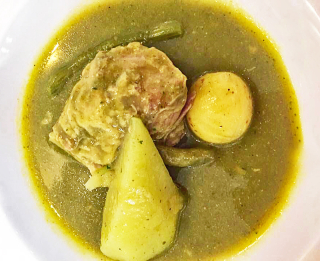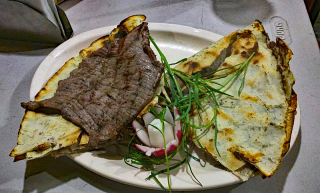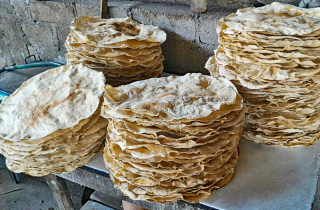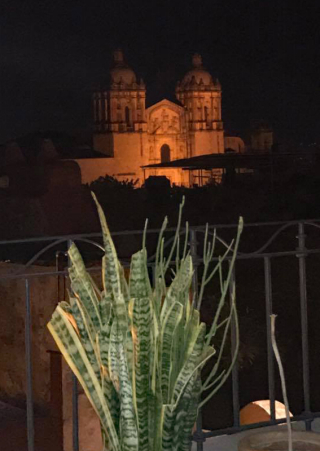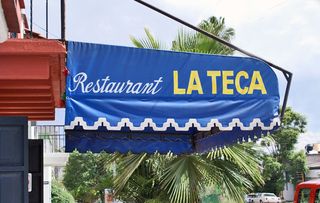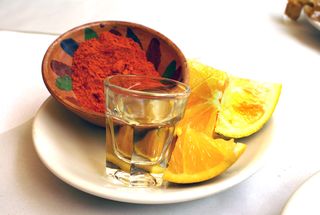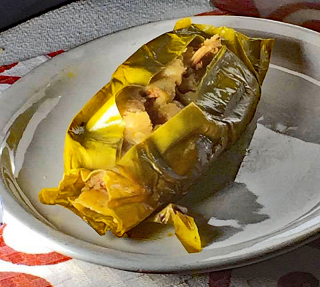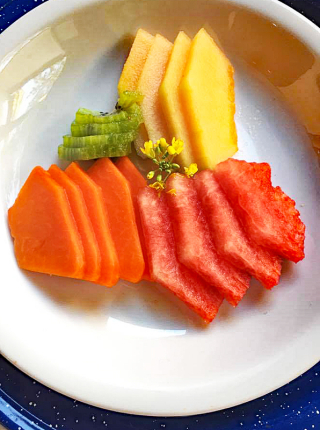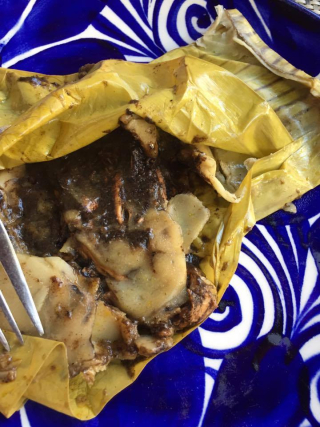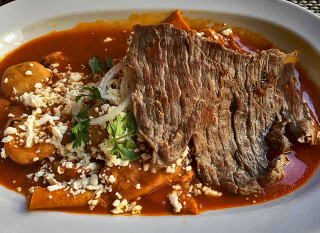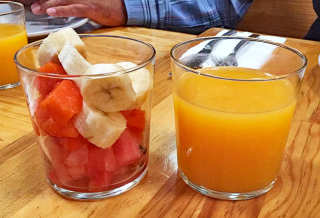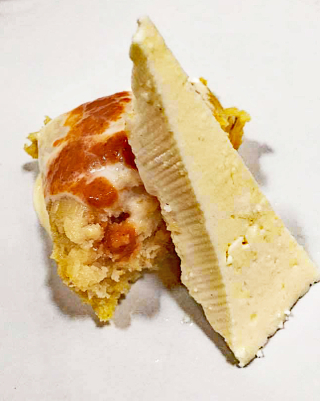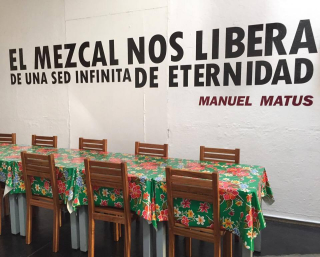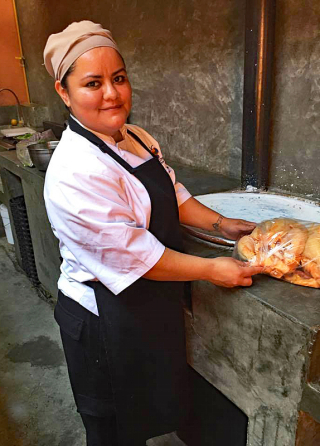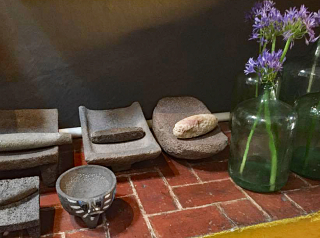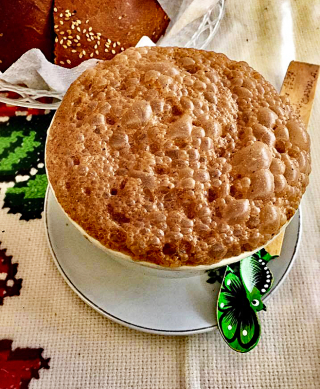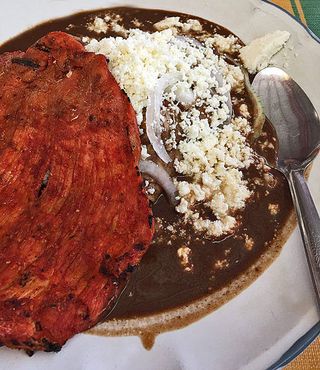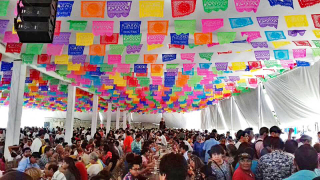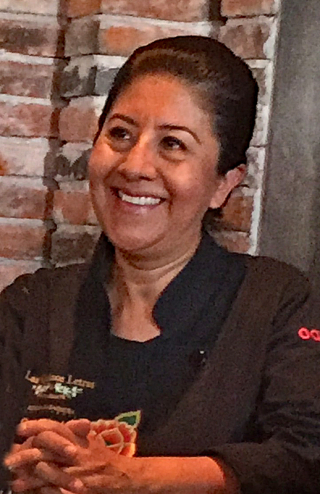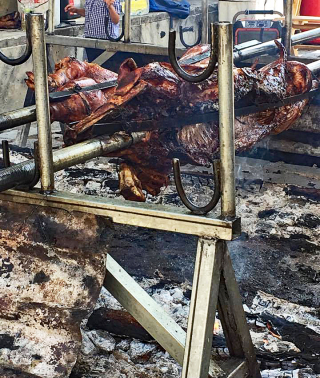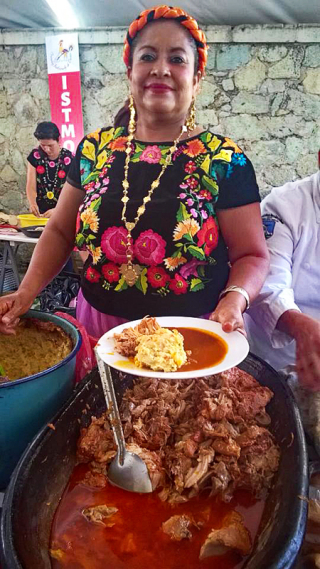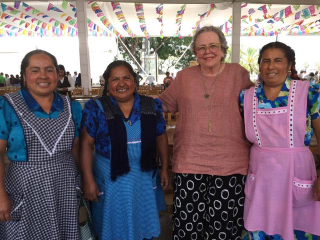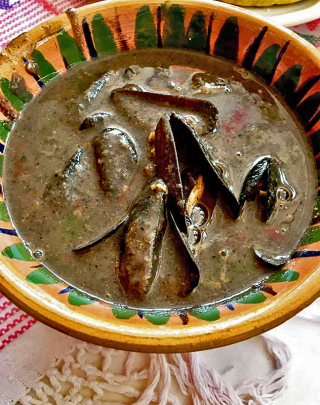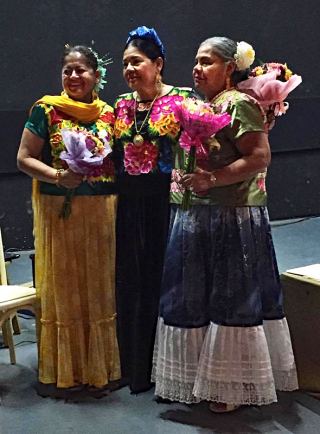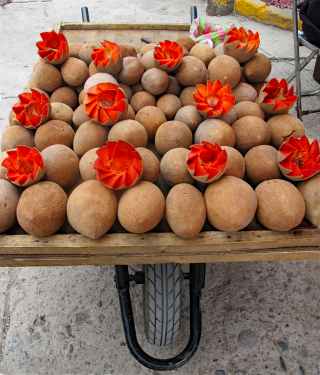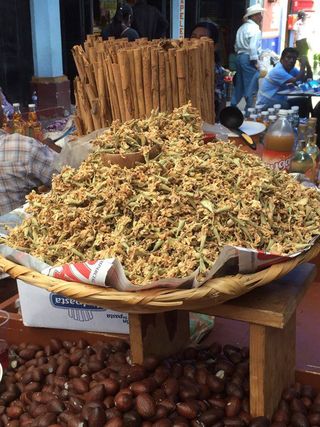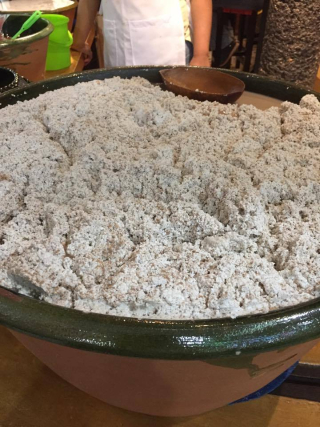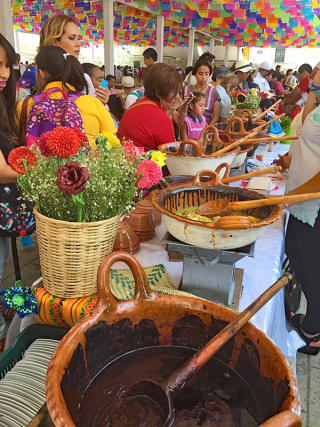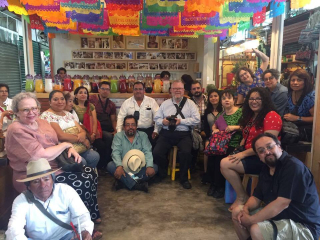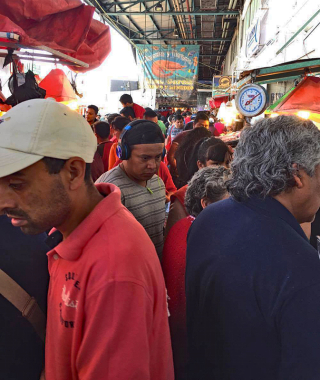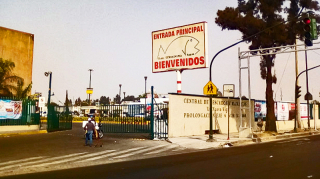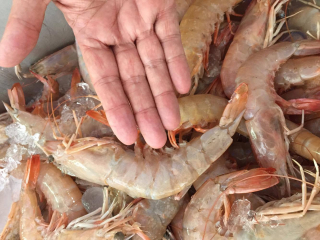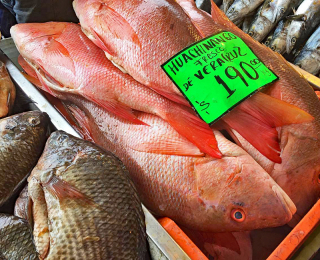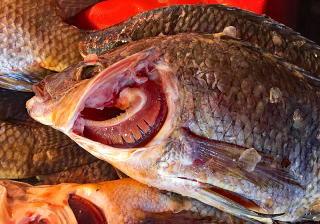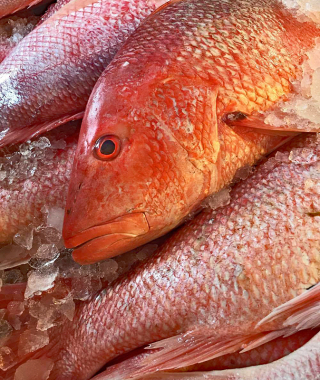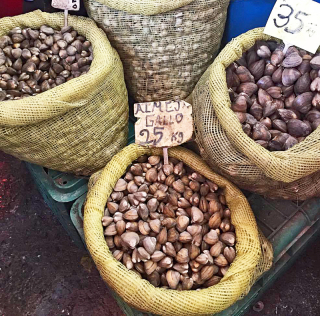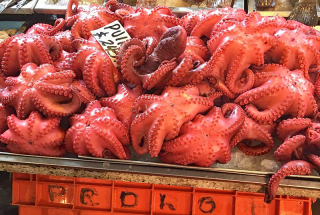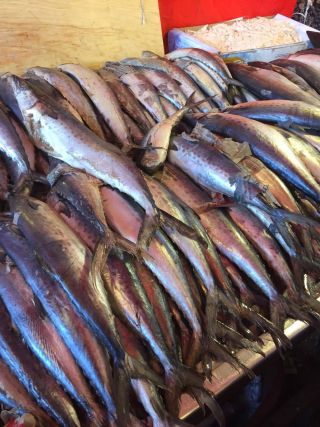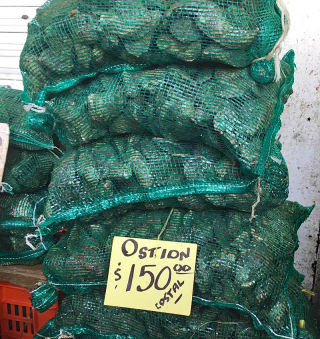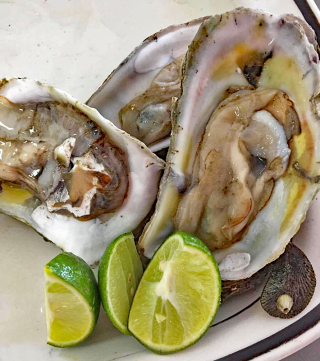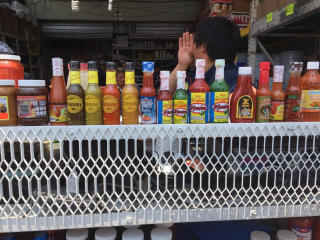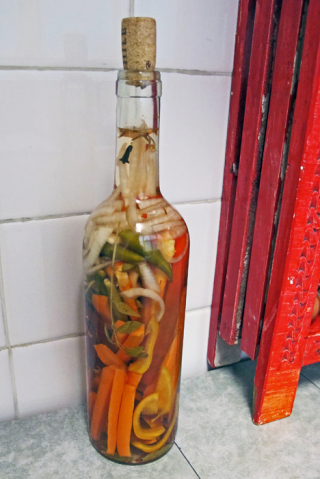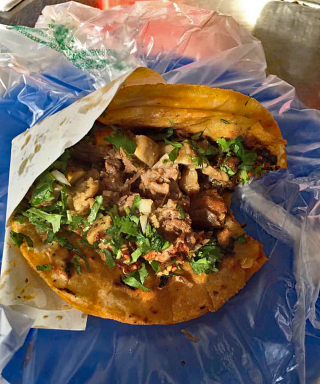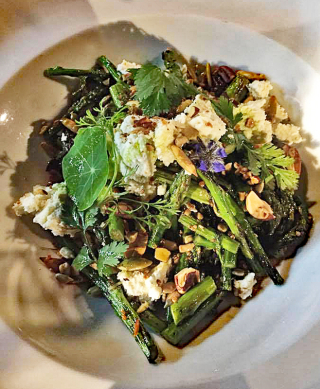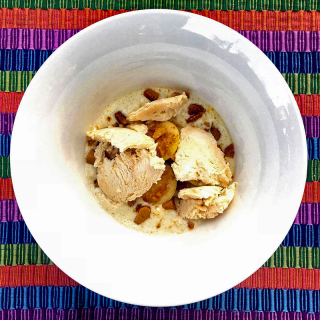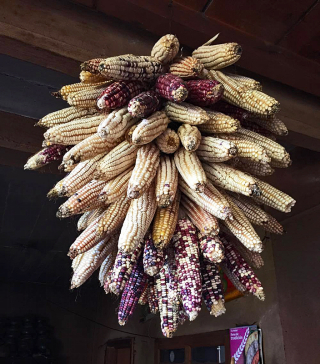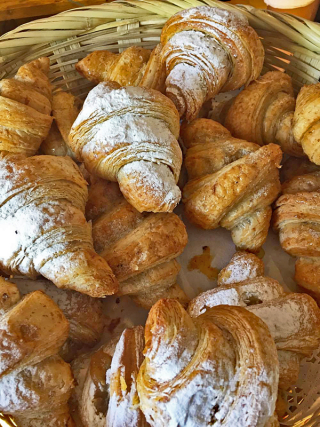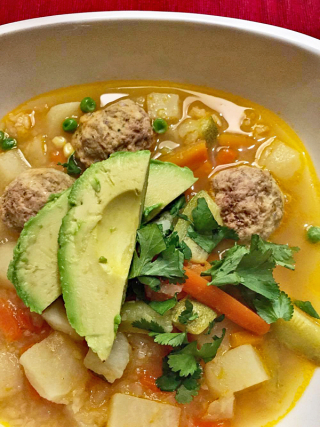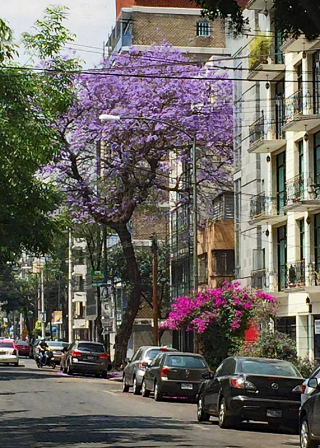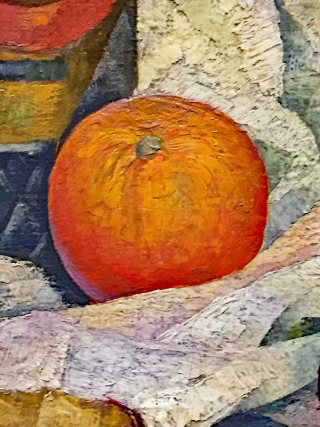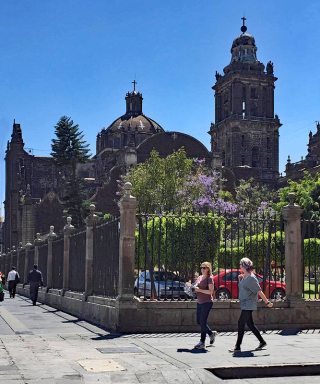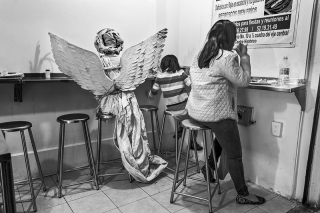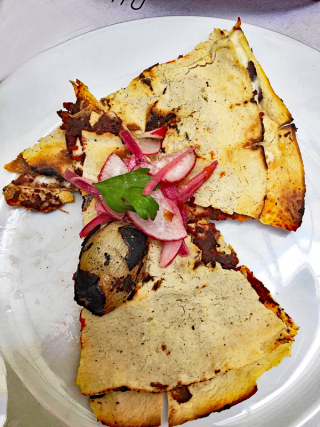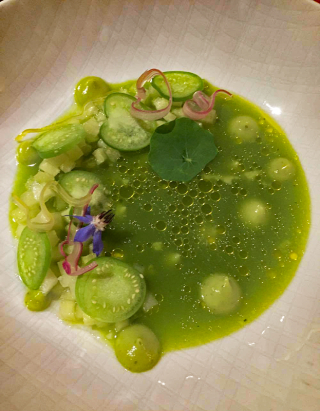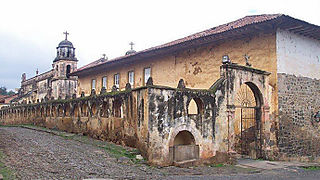
Over the course of more than 30 years, Mexico Cooks! has visited Pátzcuaro, Michoacán, one of the most beautiful small colonial cities of Mexico, more times than we can count. Every visit is memorable for 16th and 17th Century architecture, fantastic decorative arts, and food. Food! The regional Michoacán kitchen is incomparably rich and delicious, and Pátzcuaro's local specialties are truly magnificent.
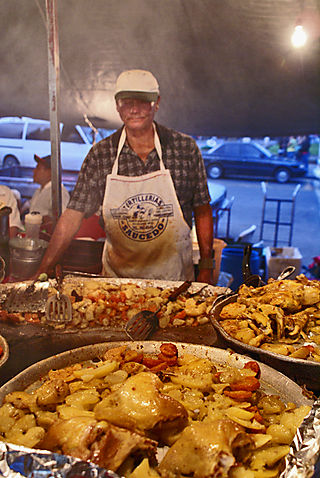
Súper Pollo Emilio has been famous for enchiladas placeras for more than 40 years: plaza-style enchiladas, the only item on the menu. The cooks prepare approximately 400 orders of these incredible enchiladas every night. Don Emilio himself (the word don is an honorific title of respect and admiration) himself is supervising meal preparation at the giant brazier.
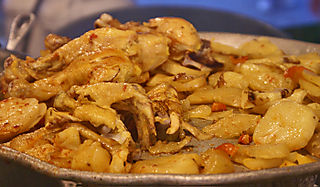
Great quantities of enormous pechugas (chicken breast halves, each large enough to satisfy two people) and piernas (leg/thigh quarters) are simmered early in the day until they're perfectly done, still juicy and tender. A bit later, preparation continues with vats of tender potatoes and fresh carrots.
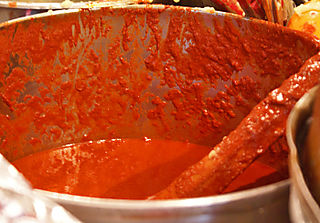
The cook fans four tortillas at a time between his fingers and dips them into this enormous pot of house-made salsa para enchiladas (enchilada sauce). The recipe? Mexico Cooks! has wheedled and whined, but Súper Pollo Emilio won't give it up.
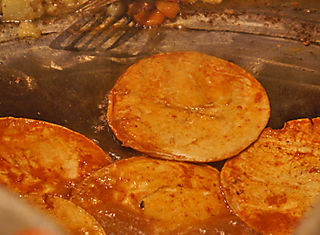
The cook spreads the salsa-doused tortillas evenly into the sizzling grease in the industrial-strength comal (griddle), flipping them rapidly from one side to the other. The tortillas need to be cooked till they are hot and soft, but not crisp.

He gives each tortilla a dollop of freshly mashed potato. The tortillas are then folded in half: voilà, enchiladas ready for your platter. Each order contains eight of these enchiladas as well as–well, we'll see in a minute.
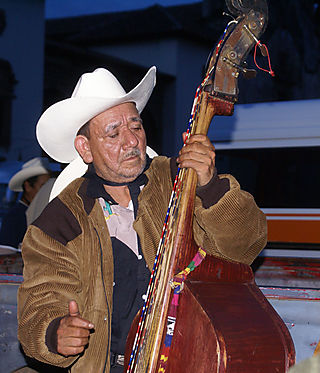
While you wait for your supper, you'll most likely be treated, as we were, to a serenata (serenade) sung by strolling local musicians. We were quite taken with the multi-colored strings of this big bass fiddle. If you enjoy the music, be sure to give a small tip to the group.
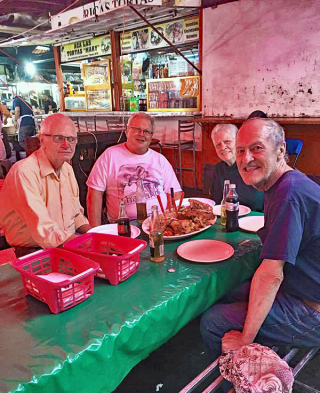
At don Emilio's with friends (clockwise from left) Bob, Tim, Diane, and John. The platter of enchiladas and chicken on the table is the large size! We couldn't begin to eat it all, but we gave it our best shot.

Our order. The platter, which looks fairly small in the photo, measures approximately 16 inches from side to side. The two forks are ordinary-size table forks. Each platter contains:
- eight potato-filled enchiladas
- freshly sautéed potatoes and carrots, enough for two or more people
- the amount and kind of chicken you prefer–we normally order a breast portion, which was more than enough for the two of us
- a sprinkle of thinly sliced onion
- large shreds of queso Oaxaca (Oaxaca cheese)
- shredded fresh cabbage
- crumbled queso fresco (fresh farmer-style cheese)
- fresh salsa roja (spicy red sauce, different from the sauce on the enchiladas)
- a base of fresh lettuce
- chile perón en escabeche (local pickled yellow chile: HOT), as much as you want
Mexico Cooks! has never seen one person finish an entire platter of enchiladas placeras as prepared by Súper Pollo Emilio. We were hard pressed to do it, but in the interest of pure research we managed to eat most of this order. We accompanied the order with a glass of agua fresca de jamaica and a bottle of LIFT, an apple soda. If you'd like a beer or two with your meal, one of the waiters will go get it for you from another stand.
Súper Pollo Emilio is a night operation; the stand sets up at around 7:00PM every evening except Tuesdays, just around dusk on Pátzcuaro's Plaza Gertrudis Bocanegra (the plaza chica). It's the booth closest to the portal (covered walkway) on the market side of the square. The booth is open till the food runs out.
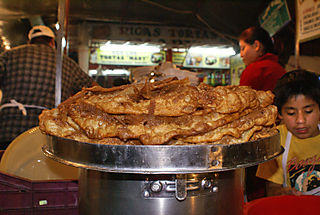
If you're still hungry after your platter of enchiladas is gone, there are buñuelos for dessert. A buñuelo is a huge flour pastry similar to a flour tortilla; it's fried until crisp. You can order a buñuelo broken and softened in a bowl of syrup or still-crispy and dusted with sugar.
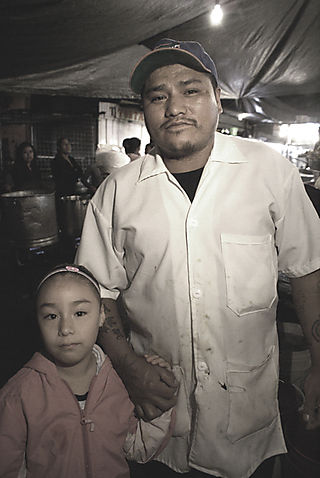
Our waiter Jesús and his sweet daughter Paola, who was helping take soft drink orders. Jesús has been a fixture at Súper Pollo Emilio since long before his daughter was born.
When you're visiting Pátzcuaro, don't miss the enchiladas placeras at Súper Pollo Emilio. If nothing else about this marvelous city brings you back again and again, you'll be pulled in by these addictive enchiladas, eaten on a chilly night under the stars, just by the market-side portales.
In early June I took a client to tour Pátzcuaro. When we arrived at Súper Pollo Emilio in the evening, don Emilio's son rushed out to greet me with a huge hug. "Señora, bienvenida y qué gusto verla de nuevo. Te comparto la triste noticia de que mi papá falleció hace ocho días." (Welcome, it's good to see you again. I have sad news: my father passed away a week ago.") We both dissolved into tears for a few moments, thinking about the rich memories that don Emilio gave us all. Súper Pollo Emilio will continue into the next generation, of course; don Emilio's son is at the helm. I dedicate this article to don Emilio's memory. If you're in Pátzcuaro, don't miss eating these fantastic enchiladas.
Looking for a tailored-to-your-interests specialized tour in Mexico? Click here: Tours.
